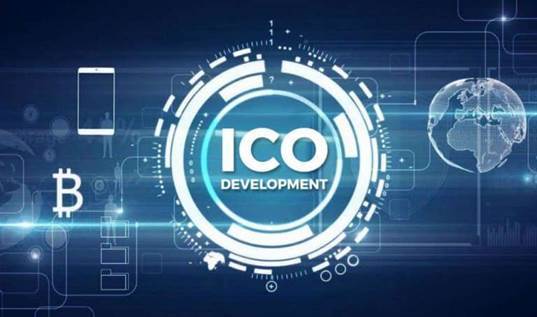Keep an eye out for various team dysfunctions that can develop even in the best teams, especially if there’s rotation among team members at some point. The team should be able to manage well without your constant input and presence. Shift your focus more towards coaching and support your team in finding their rhythm. This is arguably the most critical of all five phases, and many teams find themselves stuck at this juncture. The large versions are often called business units or departments.
The forming-storming-norming-performing cycle repeats more often than you might think. After navigating through initial forming, intensive storming, and rebuilding during norming, magic happens. They set rules, processes, and routines to make their work easier and more efficient. During this phase, most individuals feel uncertain and often hold back from providing substantial feedback or questioning established procedures.
The stages of group development with examples, explained
Uncertainty is high during this stage, and people are looking for leadership and authority. A member who asserts authority or is knowledgeable may be looked to take control. Team members are asking such questions as “What does the team offer me? Our discussion so far has focused mostly on a team as an entity, not on the individuals inside the team. This is like describing a car by its model and color without considering what is under the hood. External characteristics are what we see and interact with, but internal characteristics are what make it work.

The storming stage is the most difficult and critical stage to pass through. It is a period marked by conflict and competition as individual personalities emerge. Team performance may actually decrease in this stage because energy is put into unproductive activities. Members may disagree on team goals, and subgroups and cliques may form around strong personalities or areas of agreement. To get through this stage, members must work to overcome obstacles, to accept individual differences, and to work through conflicting ideas on team tasks and goals. They may be feeling some anxiety because of uncertainty about their individual role or future responsibilities.
What is team development?
In fact, each phase plays a critical role in the team’s progress — whether in short, medium, or long-term goals. That’s where Tuckman’s stages of group development yield immense results. By following these tips, you can help your team move through the five stages of team development and achieve success. This stage occurs when the team’s work is completed, and the team dissolves.

Most of the team’s work tenure is for a limited time and when the tenure and objectives are accomplished the teams are dissolved but the permanent teams of the organization continue to work. In the performing stage team stages of development of group formation, there is greater cooperation and consensus among team members and they are now matured, organized, and fully functioning. There is a clear structure and are committed to the mission of the team.
How to help your team through the stages of group development
In fact, disagreement is critical to effective team collaboration. So when conflicts do arise, it’s important to resolve them with effective problem-solving as they come instead of avoiding them. Having a team with already existing collaborative skills can help resolve conflicts more easily and faster. The five stages of group development, according to Bruce Tuckman’s model, are forming, storming, norming, performing, and adjourning. Norms are only effective in controlling behaviors when they are accepted by team members.
- Therefore, expecting a newly formed team to tackle significant challenges efficiently might be unrealistic.
- Resentments and irritations that were buried in the last stage erupt and negatively effect the team’s performance.
- Click the name of each activity below to get step-by-step instructions and other helpful resources like templates and videos.
- When you all work in the same location, it can be easier to hash out problems quickly.
- If the team is successful in setting more flexible and inclusive norms and expectations, members should experience an increased sense of comfort in expressing their “real” ideas and feelings.
For instance, outlining the team’s purpose and mission at the forming stage and retaliating during subsequent stages ensures no one loses sight of the common goal. As the real work starts during the storming stage, interpersonal and technical challenges will appear. Leadership decisions, individual work habits, and communication lapses during the storming stage can create tension within a team. Team members need to learn to use conflict positively so that it doesn’t slow or hinder their progress.
The stages of team development
Tensions are high as the team tries to figure out its new dynamics and how everyone will work together. This is often when personality clashes start to occur, as people begin to assert themselves and their individual strengths and weaknesses come to light. Many teams will continue to have bouts of “Storming” from time-to-time, for example, after an organisational change.

Depending on the leader of the group, the Adjourning Stage can either be a leeway into future endeavors or it could impact future collaboration. Speaking of ends, the Adjourning Stage is the bittersweet cherry on top of each team and project, and it will happen whether you want it or not. It’s a great opportunity to reflect on your accomplishments and think about what you learned. With little left to do, Daisy, Adam, Daniel, and Stella decide to throw a party for good times’ sake.
Reasons Why We Need A Systematic Team Development Approach
The role of the team leader is especially vital during Forming, as group members will look to them for guidance, direction, and leadership. ✉️ What are your thoughts on the 5 stages of group development, and do you plan to implement this framework in your work or life? Drop us a line at for a chance to be featured in this or one of our future articles.

It’s the time where your team learns about upcoming projects and structures. Here, it’s typical for teammates to feel excited, anxious, and curious about what lies ahead. To properly and clearly identify these in group form, we use the 4 stages of team development.
Weaknesses of the 5 Stages of Development
They try to conform to norms because they want to maintain their relationships in the team and they want to meet team expectations. Teams with strong performance norms and high cohesiveness are high performing. At the end of the project, set up an online https://www.globalcloudteam.com/ meeting where team members come together to discuss the entire project, from the successes to the frustrations. Ask them to prepare examples beforehand outlining what worked and what didn’t, and then give each person five minutes to share their thoughts.